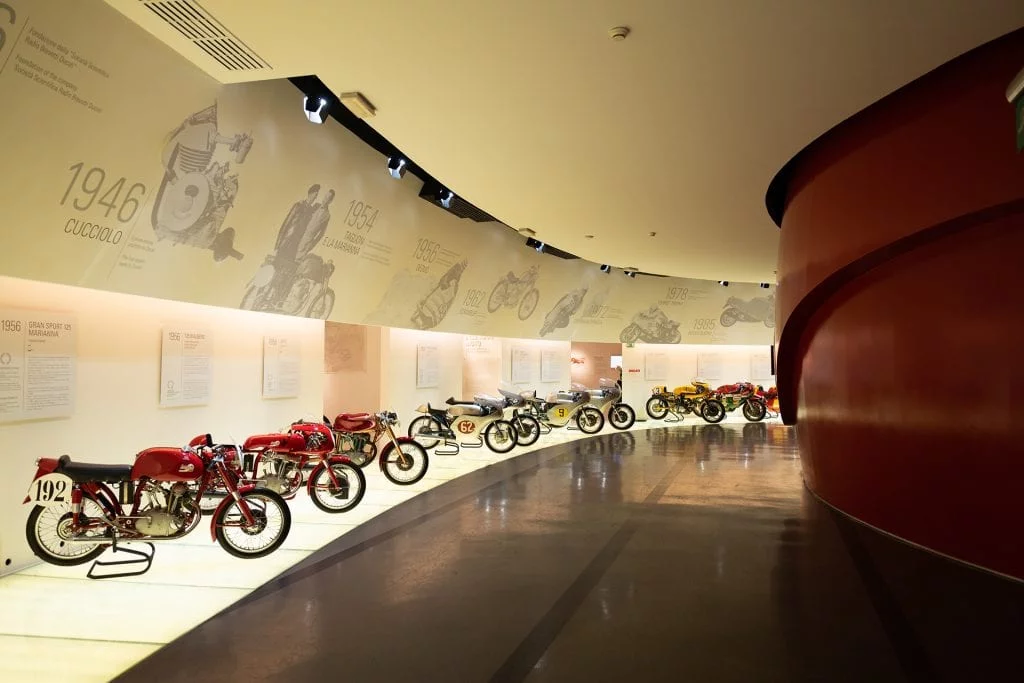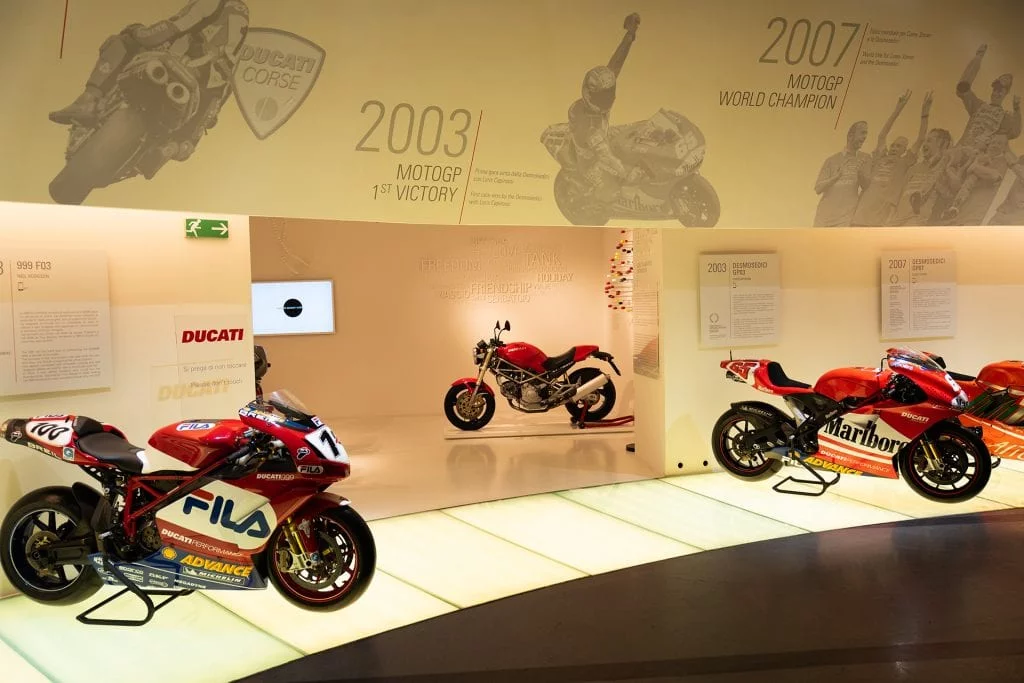We trace Ducati’s history to look at the evolution of their motorbikes over the years and how technology is reshaping motorsport in unprecedented ways.
The year was 1926. Italy was rebuilding from the First World War and political changes were afoot in Rome. About four hours north, in the medieval city of Bologna, Italy, the aging Antonio Cavalieri Ducati and his three sons—Adriano, Marcello, Bruno—were tinkering around with radio transmitters in their family home. The vacuum tube transmitter had been invented just six years earlier, giving rise to the AM radio, and the Ducatis had plans to manufacture the next big thing in capacitor technology.
By 1935, they’d found enough success in the transmitter business to move their operations from a workshop adjacent to their family home to a new factory in Borgo Panigale, an industrial slice of northern Bologna, sandwiched between the rivers Lavino and Reno. The Ducatis continued to manufacture their radio parts for the better part of the decade, but, like many industrial manufacturers in Europe at the time, the company was conscripted into the war effort when the continent went to battle once again. The Borgo Panigale factory was bombed multiple times throughout the 1940s, but it never halted production.

As the war continued to streak across the continent, Ducati added yet another product to its roster: an engine-mounted bicycle. The 98-pound bike could blast up to 40 miles per hour, perfect for zipping up and down Italian alleyways with minimum physical exertion. It was called the “Cucciolo”—“the puppy”—because of the soft growling noises its engine made.
More motorcycles followed, starting with a series of pushrod singles, like the classic Ducati Bronco, the hefty Cruiser and the lighter, racer-friendly Gran Sport. Eventually, the motorcycle became the longstanding Italian company’s premier product, which designed bikes for the streets, the race track and, in some cases, both platforms.

It wasn’t until 2003 that Ducati added another asset to its massive inventory. This was the year Ducati debuted its famed Desmosedici, a 16-valve whopper of a bike with four cylinder engine and a sleek, carbon-fiber frame. It was light, fast and classically Italian with smooth edges and sinuous style. But most importantly, it was built to win.
Four years after the bike first hit the Moto GP pavement, Ducati’s Casey Stoner rode the Desmosedici to a first ever win in the World Championship. The Ducati team has been at the forefront of the sport—considered the Formula One of motorcycle racing—since.

Just as the churning of time and the intervention of fate shaped the path of the Ducati family’s company, MotoGP has undergone a transformation of its own in recent years. It’s no longer singularly important to build the fastest engine or employ the most daring riders. In the 21st century, computer technology and artificial intelligence are reshaping the sport in unprecedented ways.
This is where another company—founded nearly six decades after Ducati, in Beijing—enters the story. In April of last year, Lenovo announced it had signed on to become the key technology partner of Ducati. The tech giant wanted to bring its computer hardware and high-performance server technology to a place it had not been before: the MotoGP racetrack.

It all starts with the sensors — upwards of 50 tiny processors embedded in the bike that track everything from the speed of a spinning wheel to the engine’s ease of acceleration. This data is stored in the bike and downloaded via cable to the Ducati team’s arsenal of Lenovo ThinkPad P1s during every pitstop. The team uses the P1 to analyze data acquired during the race to tweak the motorcycle’s specs for the next session, and some of the sensor intelligence is stored and probed to inform the designs of future Desmosedici iterations.
According to Stefano Rendina, the Ducati Corse IT Manager, “The faster the computing power, the faster the motorbikes.”

Computer technology, to a certain extent, is ushering in a fourth Industrial Revolution for motorcycle racing. In this touchstone moment, technology can mean the difference between a win and a loss, and data security is tantamount to a team’s future success. Every race must be scrutinized from start to finish.
Post-race analysis is a complicated endeavor with Ducati headquartered in Bologna and the team’s races spread across the globe. One week, the Ducati team could be burning rubber in Qatar. The next, it might be tearing up the Circuit of the Americas in Austin, Texas. Lenovo is the link between the traveling team and the folks back home.
The ease of communication enabled by Lenovo technology “makes Ducati quicker to implement new parts, redesign parts and design new products,” according to Rendina.
Such a speedy turnaround has implications that reach far beyond the bounds of MotoGP circuits. Of course, Ducati wants to continue dominating the elite racetracks, but their ultimate goal is to create faster, safer and sleeker motorcycles for the public. The technology riders test on the track will certainly make its way to the gridlocked streets of San Francisco and the cobblestoned alleys of Florence.
